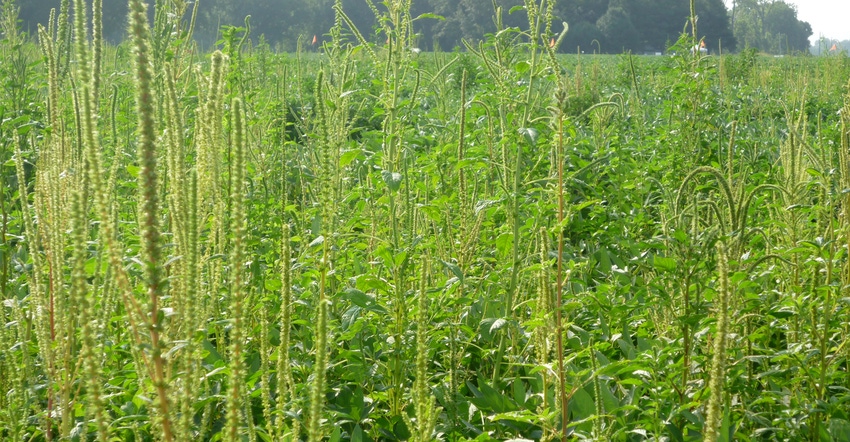April 2, 2019

By Bob Hartzler
The introduction of Palmer amaranth has the potential to significantly impact Iowa crop production in the future. But as the saying goes, there’s a silver lining behind every cloud, and Palmer amaranth’s silver lining might just be the Iowa’s Noxious Weed Law.
Iowa’s Noxious Weed Law has been one of my favorite whipping posts over the years.
This law’s ability to restrict the spread of a newly introduced weed such as Palmer amaranth has been limited due to the large number of weeds listed as noxious. The list includes some of Iowa’s most common weeds (e.g., velvetleaf, cocklebur, wild carrot). My concern has been how can a county enforce the law against a weed that poses a real threat, while ignoring other common weeds that are classified as noxious? The long-needed changes to make the law functional are happening thanks to Palmer amaranth.
The widespread introduction of Palmer amaranth in 2016 from the planting of contaminated native seed mixes led to the quick addition of this species to the list of noxious weeds. However, the obsolescence of the law prevents this action from limiting Palmer amaranth's spread. To remedy this, the Iowa Department of Agriculture and Land Stewardship (IDALS) held several meetings with stakeholders to discuss how best to update the law.
Step in right direction
The first step was to modernize the language used in the law to make it current with modern practices and regulations. This was relatively simple; the complicated part was changing the list of weeds classified as noxious. Since the list is part of the Iowa Code, any change to weeds that are classified as noxious needs to be approved by the Legislature — not an easy task.
There was sufficient pushback to making major changes to the noxious weed list, that it was decided not to make the attempt. My initial thought was that once again efforts to make the Iowa Noxious Weed Law functional have been thwarted. Fortunately, IDALS came up with an innovative process to maintain the current list of weeds while increasing the functionality of the law. There are now two categories of noxious weeds within the law:
Class A. Noxious weeds for eradication are determined to be the highest priority for eradication of existing infestations and prevention of new infestations.
Class B. Noxious weeds for control are determined to be a priority for preventing new infestations and stopping the spread of the species.
Goal: Eradicate Palmer in Iowa
At this time, Palmer amaranth is the only Class A noxious weed, and the goal is eradication of existing infestations. Class B noxious weeds include Canada thistle, teasel (dipsacus species), leafy spurge, bull thistle, multiflora rose, field bindweed and all other thistles in the Carduus genus. Only species listed as Class A or B will be targeted for enforcement under the rules of the weed law.
While these changes do not accomplish everything I would have liked to see, it is a great improvement. I don’t think all of the Class B weeds deserve listing simply because most of them are so widespread in the state that this classification will have little impact (the horse has already left the barn).
Plus, I think there are weeds that deserve to be listed as either Class A or Class B. Mile-a-minute weed is an example of a weed that a Class A listing might help prevent it from becoming a permanent part of the Iowa flora. Another plant, Sericea lespedeza, poses a real threat to restored prairies and other areas, and warrants being listed as a Class B noxious weed.
Regardless, I tip my hat to the folks at IDALS who found a way to make the best out of a difficult situation.
Full list of Iowa's noxious weeds
Quack grass
Perennial sowthistle
Canada thistle
Bull thistle
Field bindweed
Horsenettle
Leafy spurge
Perennial peppergrass
Russian knapweed
Buckthorn (rhamnus species)
All thistles in Cirsium and Carduus genera
Palmer amaranth
Velvetleaf
Cocklebur
Wild mustard
Wild carrot
Buckhorn plantain
Sheep sorrel
Smooth dock
Poison hemlock
Multiflora rose
Wild sunflower
Teasel (dipsacus species)
Shattercane
Hartzler is an Iowa State University Extension weed management specialist. Contact him at [email protected].
You May Also Like




